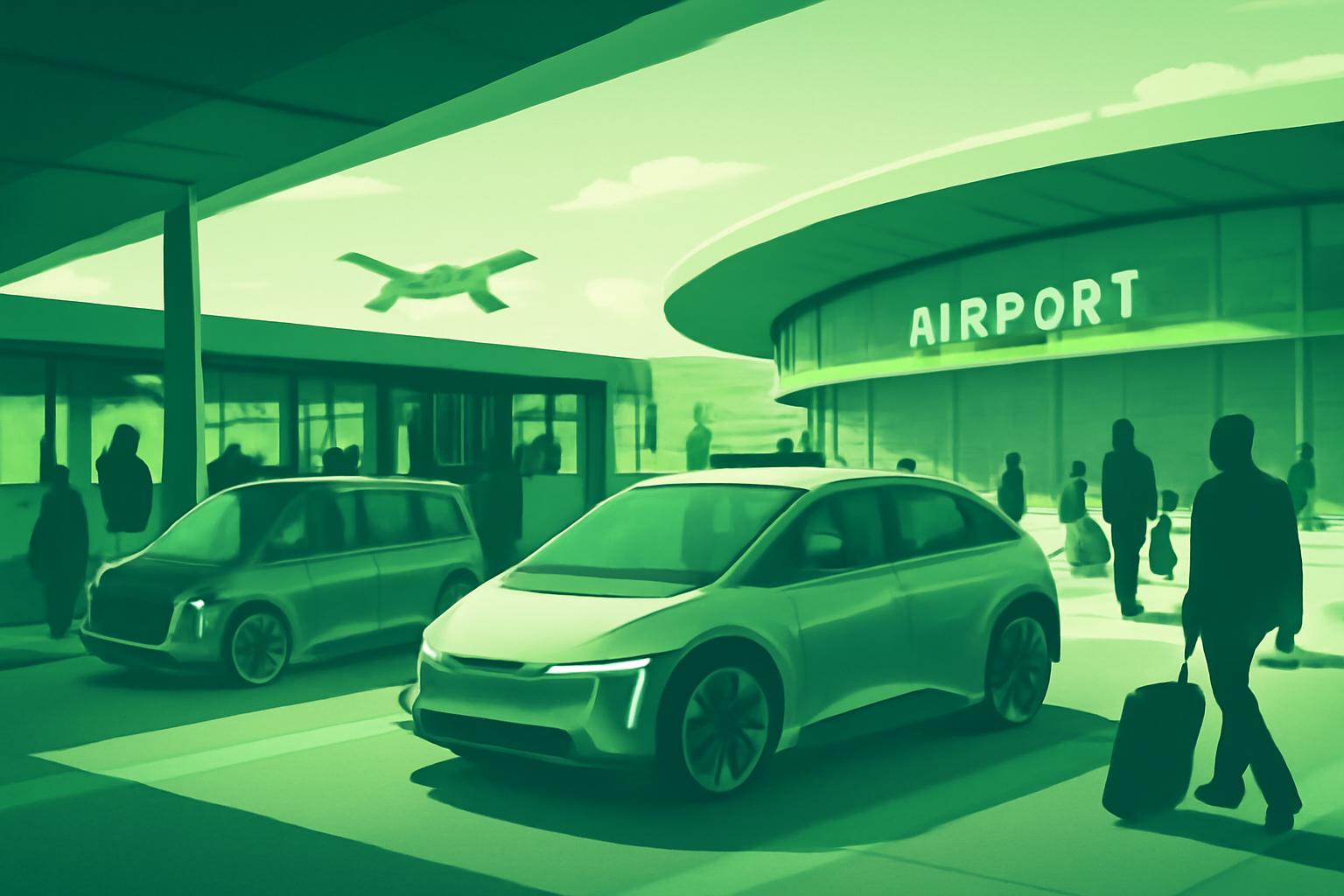Robotaxi Competition: A Complex Landscape
The autonomous vehicle sector, once described as a “race” to commercialization, has evolved into a complex and fragmented journey. Industry insiders now see this progression more as a long, winding road than a straightforward competition. The challenge lies not only in technological validation but also in establishing sustainable business models. While numerous companies showcase their presence across multiple cities, deeper strategic battlegrounds have emerged, particularly in two critical domains: airports and public transit integration.
Airports as Strategic Robotaxi Gateways
Airports have historically been vital to the success of ride-hailing services, and they continue to be a key focus for robotaxi providers. Waymo currently operates autonomous rides to and from Phoenix Sky Harbor Airport and is actively expanding. Recently, Waymo received permits to begin testing autonomous vehicles at San Francisco International Airport and San Jose Mineta International Airport, signaling imminent commercial service launches. Tesla is also vying to offer autonomous ride-hail services at these major hubs, intensifying competition.
Integrating Robotaxis with Public Transit Networks
A significant development in robotaxi deployment is the partnership between Waymo and transit software leader Via. This collaboration enables government transit agencies using Via’s platform to incorporate Waymo’s autonomous vehicles into their existing public transit options. The first implementation is underway in Chandler, Arizona, where riders using the Chandler Flex on-demand fleet can book Waymo robotaxi rides at a subsidized fare of $2 or less when traditional vehicles are unavailable. Although this model may not be immediately profitable for Waymo, it represents a strategic volume play with potential to scale to hundreds of cities.
“When a traditional Chandler Flex vehicle isn’t available, riders may opt for a fully autonomous Waymo ride at a reduced price, integrating robotaxis into public transit seamlessly.” — Waymo spokesperson
Notable Investments and Industry Developments
Wayve, a UK-based startup specializing in generalized end-to-end autonomous driving technology, is advancing its Series D funding round with a potential $500 million strategic investment from Nvidia. This follows a $1.05 billion Series C round secured last year involving SoftBank, Microsoft, and Nvidia.
- Divergent Technologies has pivoted from automotive to defense, securing $290 million to expand military component manufacturing.
- EV Realty raised $75 million to develop electric truck charging infrastructure in California.
- Moove, an African vehicle-financing startup backed by Uber, is reportedly targeting a $300 million funding round with a valuation over $2 billion.
- XL Batteries secured $7.5 million to advance flow battery energy storage solutions.
Additionally, Hyundai Motor Group outlined ambitious growth targets for North America, aiming to increase annual sales to 5.55 million vehicles by 2030, with electrified vehicles comprising 60% of sales. Rivian broke ground on a new manufacturing plant near Atlanta, while Stellantis canceled production plans for its all-electric Ram 1500 REV pickup, citing low demand. Tesla is addressing safety concerns by redesigning door handles on Model Y SUVs following regulatory investigations and has recalled Powerwall 2 home batteries in Australia after fire incidents. Uber announced plans to pilot drone-based Uber Eats deliveries in select U.S. markets through a partnership with Israeli startup Flytrex.
Upcoming Industry Event
TechCrunch Disrupt 2025 will take place from October 27 to 29 at Moscone West, San Francisco. Notably, Wayve CEO Alex Kendall will join the event to discuss advancements in autonomous driving technology.
FinOracleAI — Market View
The emerging focus on airports and public transit integration underscores a maturation in the robotaxi sector. These strategic battlegrounds could determine market leadership by enabling broader adoption and operational scale.
- Opportunities: Expansion into airport services and public transit partnerships offers volume growth and enhanced urban mobility integration.
- Risks: Low initial profitability in subsidized transit integration and regulatory hurdles at airports may challenge near-term financial outcomes.
- Technology: Strategic investments like Nvidia’s potential funding in Wayve signal confidence in scalable autonomous driving solutions.
- Market Dynamics: Diversification by legacy automakers and startups alike indicates an evolving competitive landscape with varied business models.
Impact: The robotaxi market is transitioning from experimental deployments to integrated urban mobility solutions, positioning companies that secure key transit partnerships and airport access for long-term success.













